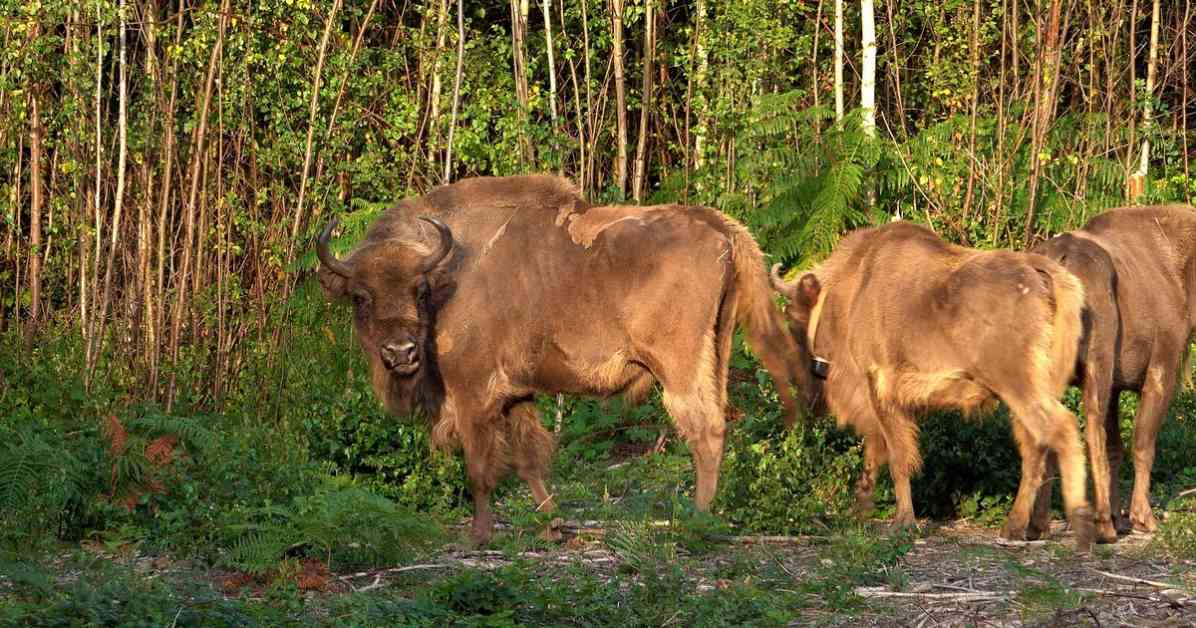Bison have recently welcomed two new calves to their herd in Kent’s Blean Woods. The conservation project, led by Kent Wildlife Trust and Wildwood Trust, aims to restore complex habitats and help nature thrive in the face of climate change. The two female calves were born to younger females who arrived in 2022, bringing the herd’s population to eight.
The European bison, the continent’s largest land mammal, plays a crucial role in managing the woodland habitat by grazing, felling trees, and creating new spaces for other wildlife. Despite being classified as dangerous wild animals under UK law, the bison are kept within fenced enclosures to protect the public. However, the extensive fencing poses challenges due to the network of footpaths in the area.
To expand the bison’s range, a £1 million project to build the UK’s first bison bridges has commenced. These bridges will allow the animals to move through the woodland while ensuring safety for walkers above. The latest births mark a significant milestone in the European breeding program, contributing to the species’ recovery from near-extinction.
Bison ranger Hannah Mackins expressed her astonishment at the unexpected arrival of the calves and praised the herd’s progress. The team is delighted with the natural breeding process and the animals’ thriving behaviors in the regenerated woodlands. Paul Whifield, director general of Wildwood Trust, emphasized the importance of allowing the herd to grow naturally over time through breeding.
In addition to bison, the Wilder Blean project has introduced Longhorn cattle, iron-age pigs, and Exmoor ponies to enhance biodiversity and ecosystem health. This holistic approach to conservation underscores the significance of preserving and restoring natural habitats for the benefit of both wildlife and the environment. The successful integration of bison into ancient woodlands serves as a testament to the positive impact of rewilding initiatives in addressing ecological challenges.












